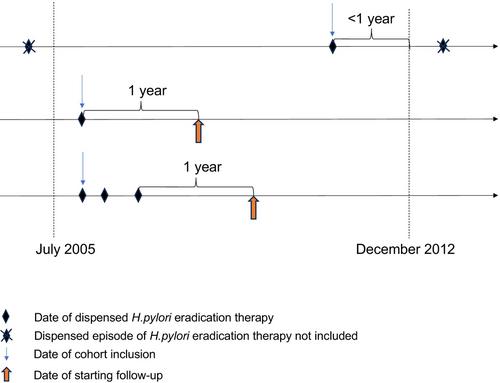Helicobacter pylori Eradication Therapy and the Risk of Colorectal Cancer: A Population-Based Nationwide Cohort Study in Sweden
Abstract
Background
Helicobacter pylori (H. pylori) is an established gastric carcinogen, also associated with an increased risk of colorectal cancer. Therefore, we suspected that H. pylori eradication lowers the risk of colorectal cancer.
Material and Methods
We assessed if H. pylori eradication therapy is associated with a reduced risk of colorectal adenocarcinoma in a population-based nationwide cohort study. This study included all Swedish adults with at least one recorded H. pylori eradication episode between July 2005 and December 2012, based on the high-quality Swedish health registries. Colorectal adenocarcinoma risks were compared to the Swedish background population, presented as standardized incidence ratios (SIRs) and 95% confidence intervals (CIs), accounting for age, sex, calendar period, tumor location (left or right sided), stage, and number of eradication episodes, from 1 year after eradication and onward.
Results
Among 80,381 individuals receiving H. pylori eradication therapy (average follow-up 4.1 years), 282 were diagnosed with colorectal cancer (97.2% adenocarcinoma). Overall, H. pylori eradication was associated with an elevated risk of colorectal adenocarcinoma (SIR 1.27, 95% CI: 1.12–1.43). The colorectal adenocarcinoma risk was increased 1–2 years after eradication (SIR 1.42, 95% CI: 1.17–1.72), then decreased 2–4 years (SIR 0.80, 95% CI: 0.65–0.98) and 4–6 years (SIR 0.76, 95% CI: 0.57–0.99), yet not ≥ 6 years (SIR 1.36, 95% CI: 0.78–2.21) after eradication compared to the general population. Overall, right-sided (SIR 1.47, 95% CI: 1.21–1.76) and left-sided (SIR 1.35, 95% CI: 1.09–1.67) colon adenocarcinomas risks were higher among eradicated individuals than the general population.
Conclusion
H. pylori eradication was not associated with a clear and consistent reduction of colorectal cancer in our Swedish cohort.


 求助内容:
求助内容: 应助结果提醒方式:
应助结果提醒方式:


